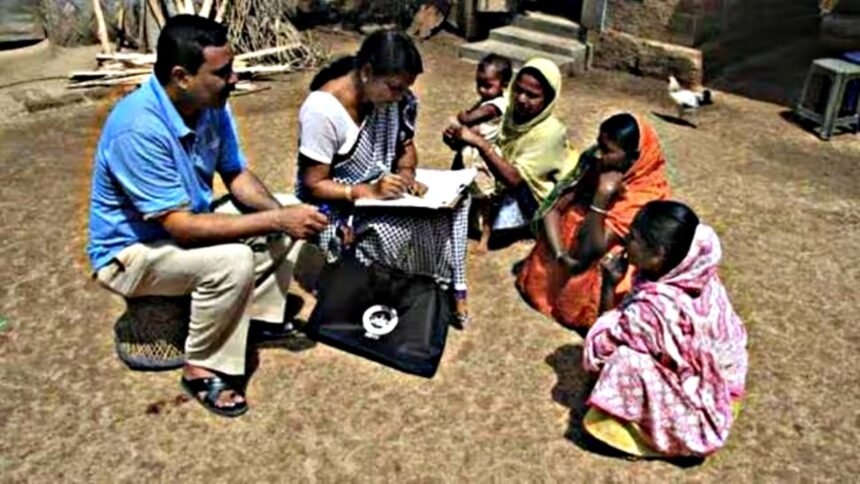The Centre plans to geo-tag all buildings — residential and non-residential — in the Census 2027, The Indian Express has learned.
It is learnt that a Digital Layout Mapping (DLM) will be used by enumerators to geo-tag all buildings with their assigned Houselisting Blocks (HLBs) during the Houselisting Operations (HLO), the first phase of the Census. Geo-tagging is the process of assigning a unique latitude-longitude coordinate to a specific building on a Geographical Information System (GIS) map.
A Houselisting block means “a well-defined area in a village or in a ward of the town which can be clearly demarcated on the ground and for which a notional map is drawn for the purpose of the Census Operations.” Such blocks created for the HLO and Population Enumeration (PE) are called the Houselisting Blocks (HLBs) and Enumeration Blocks (EBs) respectively.
This will be the first time that geo-tagging of all buildings will be undertaken as part of the Census. In the earlier census, hand-drawn notional sketches used to be drawn as part of the houselisting exercise. However, now the geo-tagging exercise will automatically generate layout maps derived from geo-tagged building data.
As of now, the government geo-tag assets created under various schemes. For instance, houses constructed under the Pradhan Mantri Awaas Yojana-Gramin and PMAY-Urban are geotagged.
In the Census 2027, data will be collected on the number of Census Houses and Households residing in each building. The buildings will be classified in various categories like residential, non-residential, partly residential, and landmark.
As per the Census 2011 definition, a ‘household’ is usually a group of persons who normally live together and take their meals from a common kitchen unless the exigencies of work prevent any of them from doing so.
Story continues below this ad
The geo-tagging exercise will help in accurately estimating the number of Census houses and households requiring enumeration, thus improving workload management across field functionaries, as per the sources.
Like the geo-tagging of the building, all Houselisting Block boundaries will be created in a geo-reference format using a dedicated web mapping application having reference geospatial data including administrative boundaries, satellite imagery, built-up areas.
The move is significant as over 33 crore houses will be geo-tagged during the Census 2027. As per the Census 2011, the total number of houses in India was recorded at 330.84 million in 2011, which included 306.16 million
occupied and 24.67 million vacant houses. Of the total 330.84 million houses, 220.70 million were in rural areas and 110.14 million in urban areas. The Census 2011 defined a ‘Census House’ as “a building or part of a building used or recognized as a separate unit because of having a separate main entrance from the road or common courtyard or staircase etc.” A Census House may be occupied or vacant and it may be used for a residential or non-residential purpose
or both.
The houselisting operation of the Census 2027 will be conducted from April to September 2026, and population enumeration that is scheduled to begin in February 2027 in the entire country, except for Ladakh, Jammu and Kashmir, Himachal Pradesh, and Uttarakhand, where it will be conducted in September 2026. During houselisting, details on housing conditions, household amenities, and assets possessed by the households will be collected.
Story continues below this ad
According to sources, the next Census will be the first digital one as data will be collected through dedicated mobile applications developed for the purpose. The option to self-enumerate will also be provided to the public and caste data will also be captured electronically, sources said. It is learnt that the RGI is also developing a website, Census Monitoring & Monitoring System (CMMS), for the real-time monitoring and management of the entire exercise.








